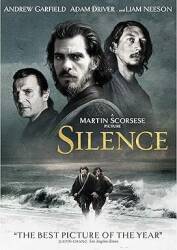
Temples on a Sunny Day
Temples in Nagasaki
I will visit three Buddhist temples on this nice sunny
day — Shōfuku-ji,
the unusually designed Fukusai-ji,
and Kotai-ji.
I will also visit the Christian
Memorial of the 26 Martyrs.
I've just left where I'm staying, with the red banners
at the right end of the bridge over the Nakashima River.
Most of these bridges date from the 17th century.
They were built as gateways to temples.
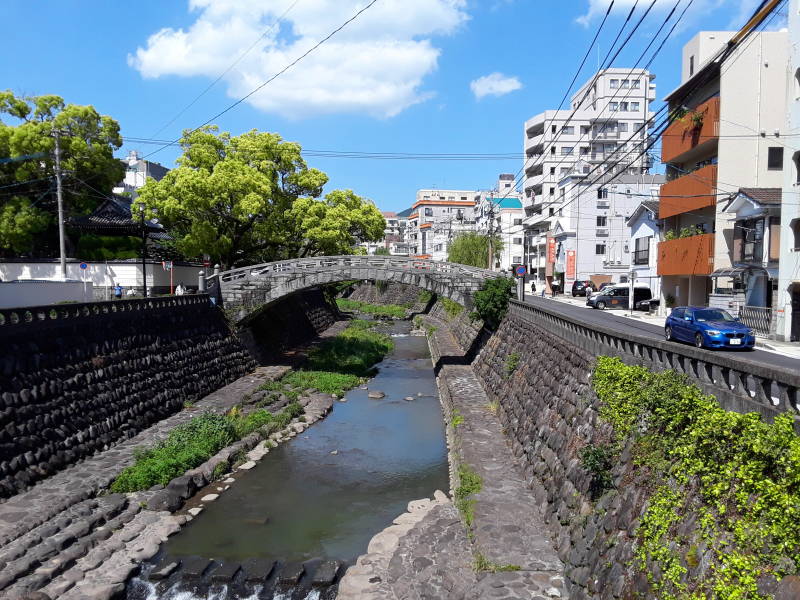
Along the Nakashima River
Many people go to the riverbanks on nice days. A family is feeding a group of koi or colored carp.
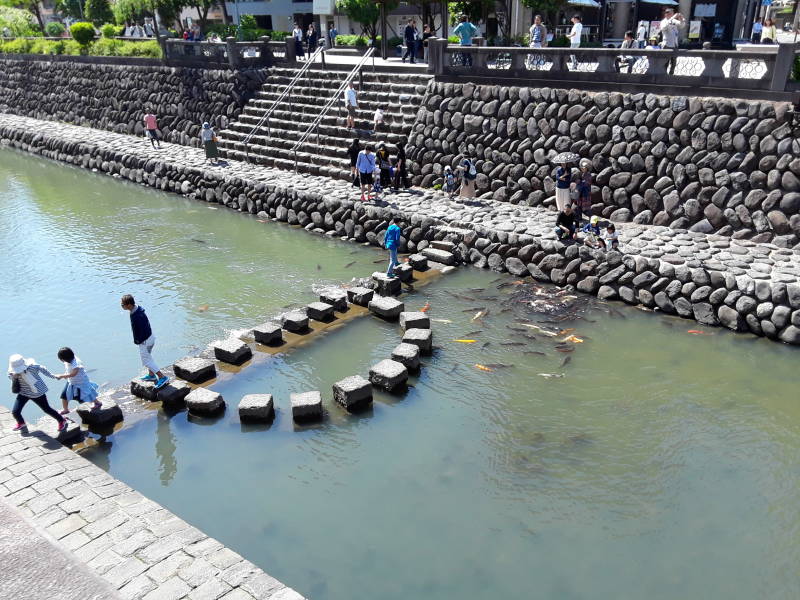
Below is the Meganebashi or "Spectacles Bridge", called that because of the appearance of it and its reflection.
The first bridge was built here in 1634 by a Chinese monk living at Kofuku-ji Temple. It has been heavily damaged in flooding, but repaired and rebuilt with most of the original stones each time. It's somewhat like Buddhist temples and Shintō shrines, occasionally rebuilt as a new incarnation of an ancient thing.
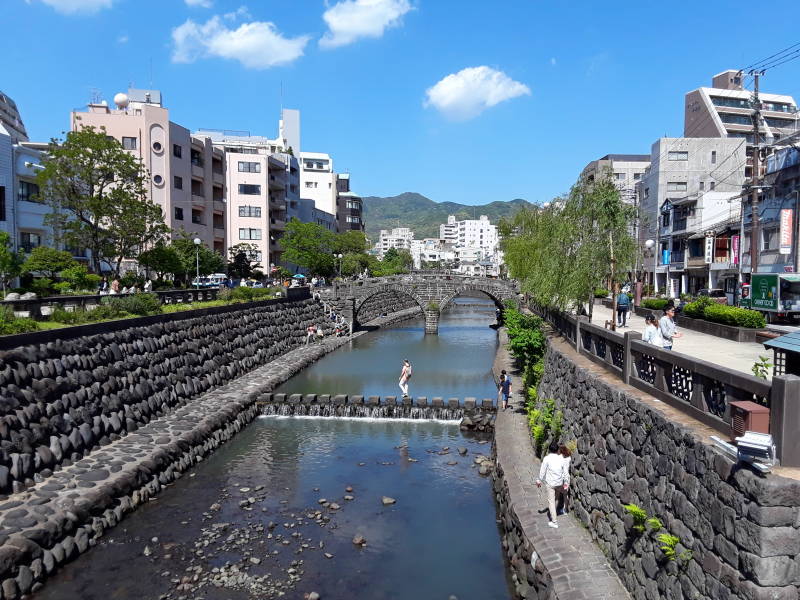
Shōfuku-ji
Shōfuku-ji is up a staircase from the street, and as you explore it, you climb higher.
It's of the Ōbaku-shū Zen school of Buddhism, the third largest in Japan after Sōtō and Rinzai. That school began developing in Japan around 1620, when Chinese immigrants were coming to Nagasaki.
The Chinese traders allowed to operate in Nagasaki petitioned the Shōgun to allow monks to come from China and build monasteries in the late-Ming style with which they were familiar.
This temple was founded in the 1650s, and largely completed in 1677. It's on the steep lee slope of the ridge, opposite where the atomic bomb exploded, so it was largely protected from damage.
This is confusing!
I am visiting Shōfuku-ji,
which is up a hill near the train station.
Later, on a
rainy day,
I will visit Sōfuku-ji,
which is up a different hill southeast of
the Nakashima River.
Shōfuku-ji versus Sōfuku-ji.
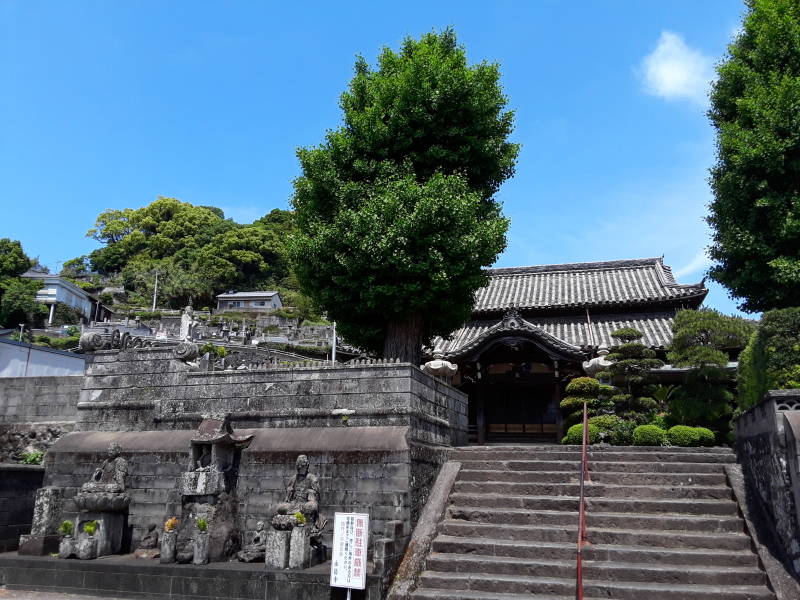
Shōfuku-ji is the fourth of the Chinese temples built in Nagasaki, founded about 50 years after the first three. Each was established by people from different areas of China. This one was known as the Guangdong (or Canton) temple.
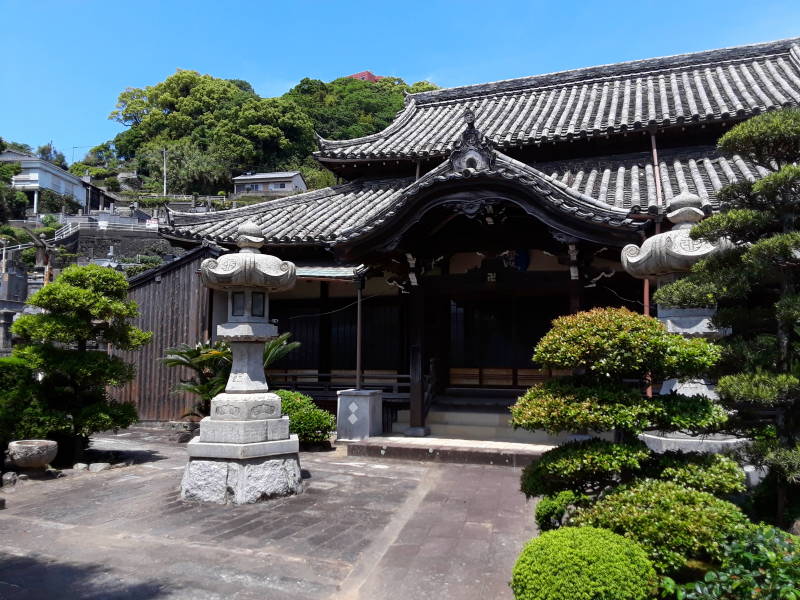
Shōfuku-ji was founded by the local Chinese community, but it has always had Japanese priests.
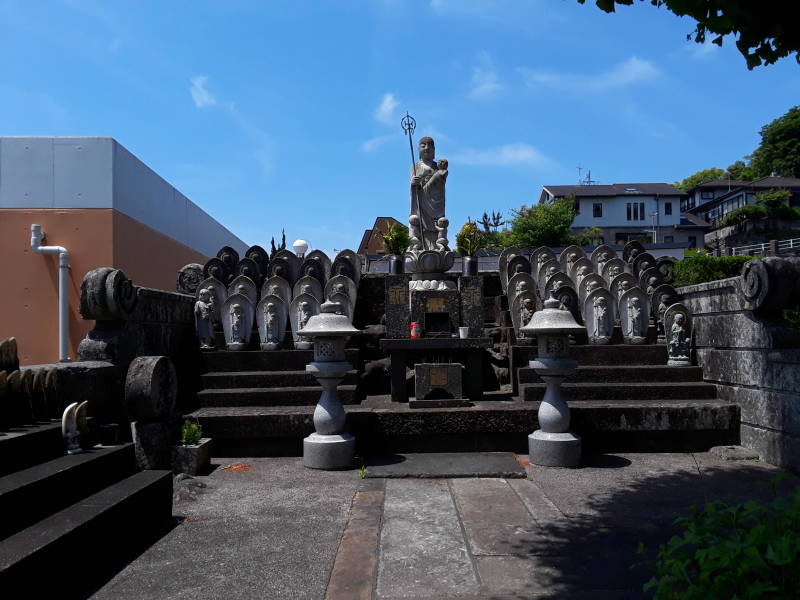
Shōfuku-ji is close to the center, not too far from the train station, but there is plenty of green. Large trees and informal garden areas.
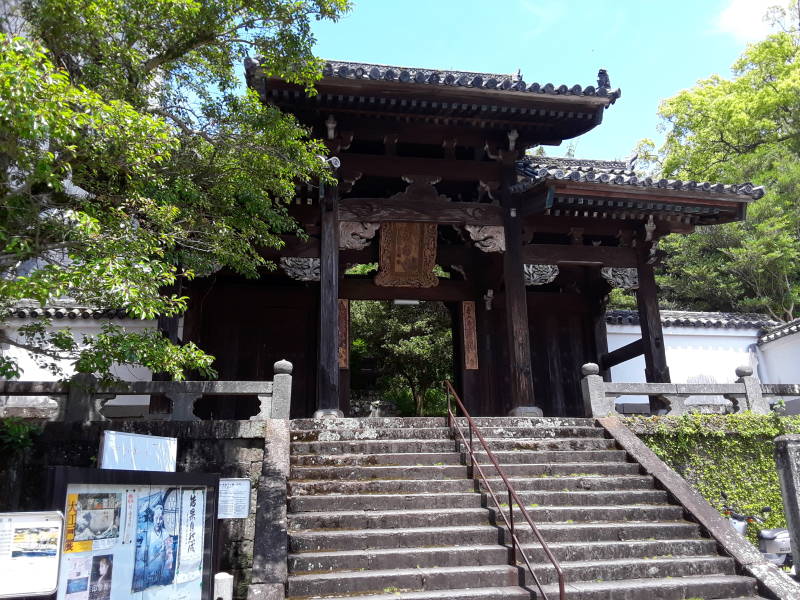
You keep climbing and passing through gates, entering increasingly sacred areas.
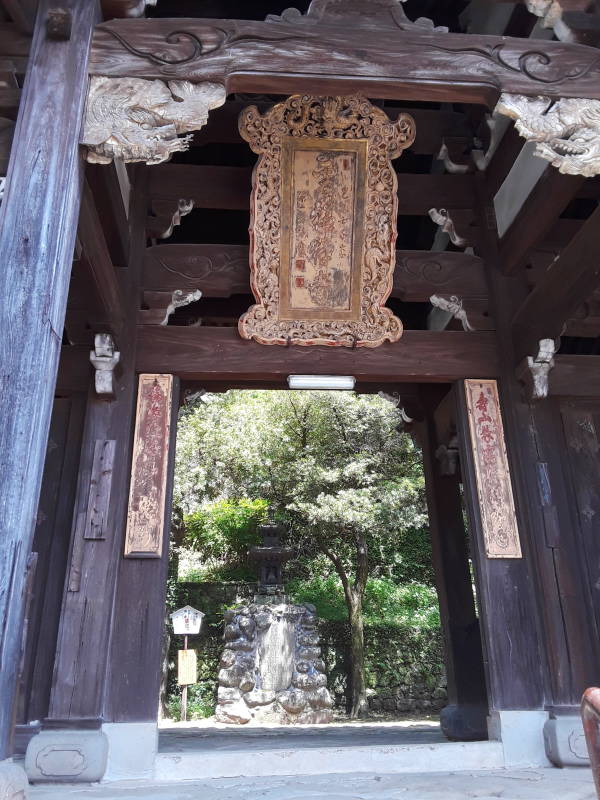

This is a furnace for burning worn out scripture pages that are no longer being used.

Much of the temple complex was rebuilt in 1715, and little has been changed since then.
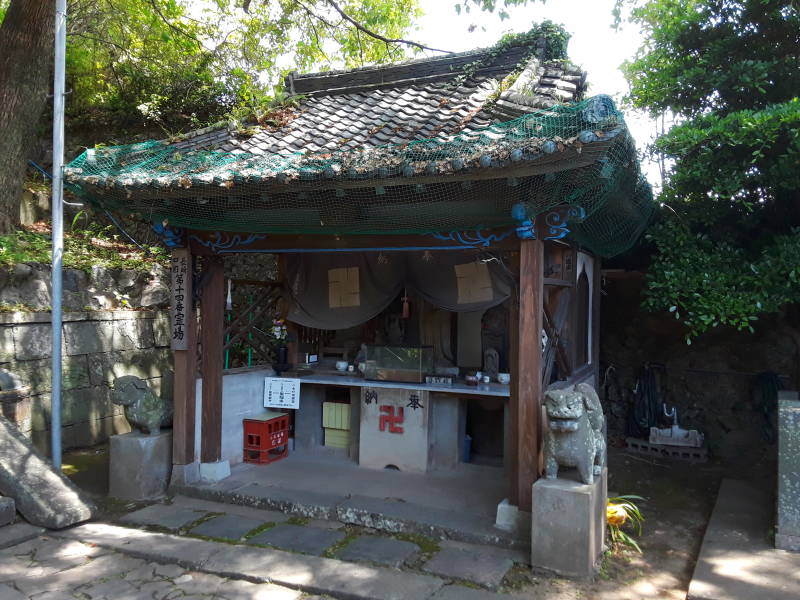

And we climb higher, to the inner temples.

The tennoden was built in 1705.
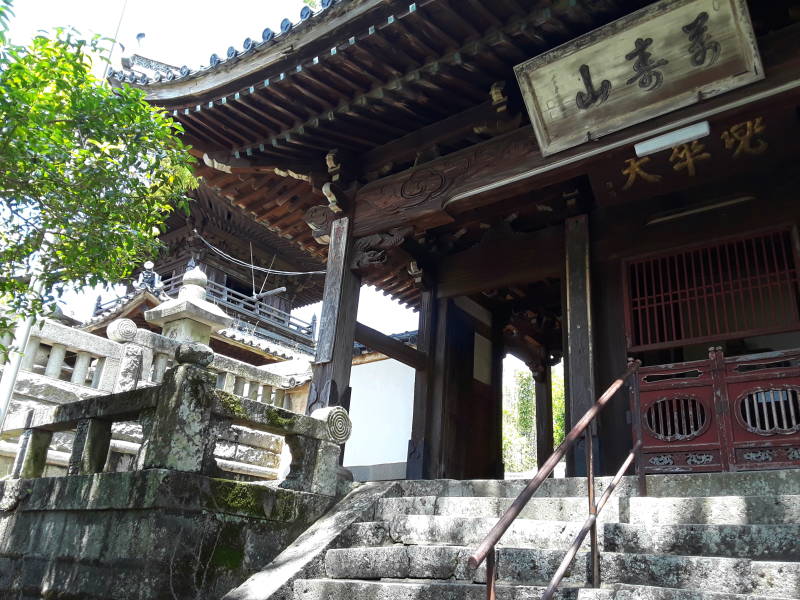
The temple's bell was cast in 1718, and it was the largest and loudest in Nagasaki. They only rang it at night.


Inside is a statue of a manifestation of the Maitreya, the Buddha of the Future, a bodhisattva who will appear on Earth in the future, achieve complete enlightenment, and teach the pure dharma.

The garden atmosphere is very nice.

Much of the wood at the Shōfuku-ji complex is left unpainted. The other Chinese temples are mostly painted shades of red.

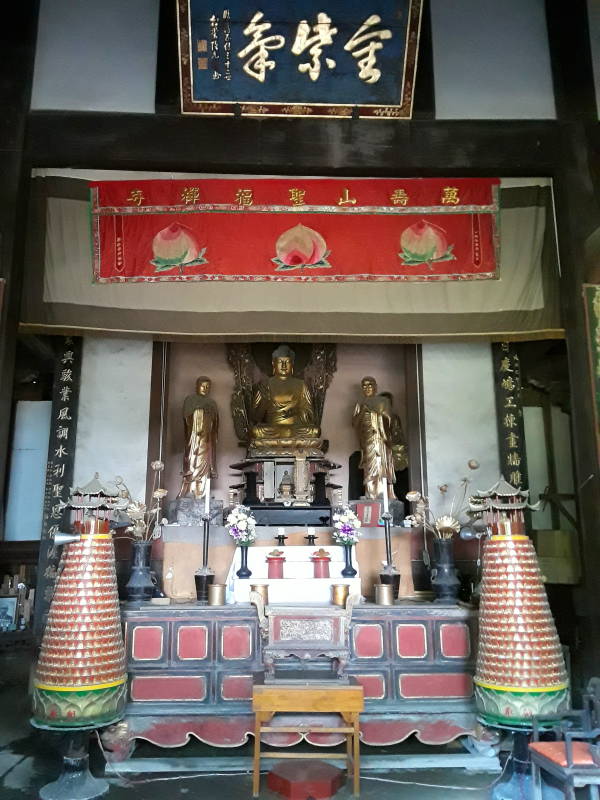


Now I'll walk from Shōfuku-ji to Fukusai-ji. It's only about 200 meters on to the northwest.

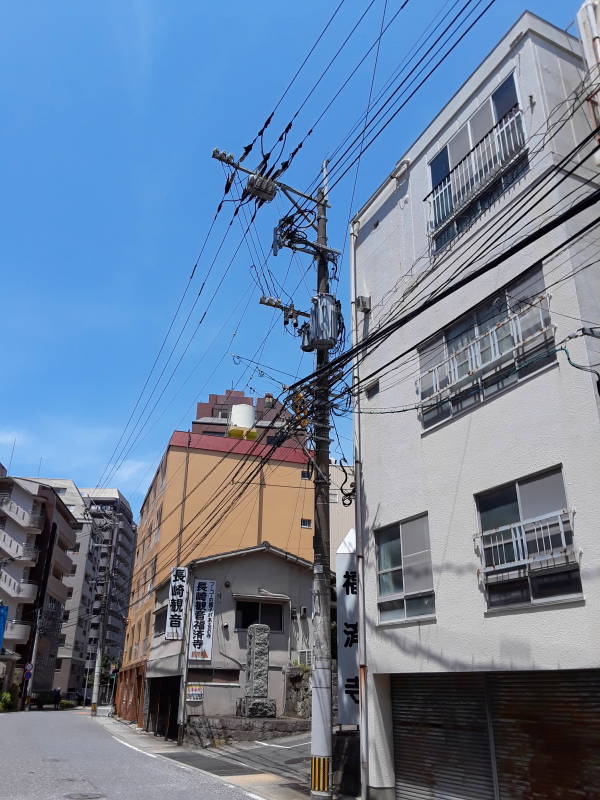
Fukusai-ji
A curving entry drive leads from the street to the Fukusai-ji complex.
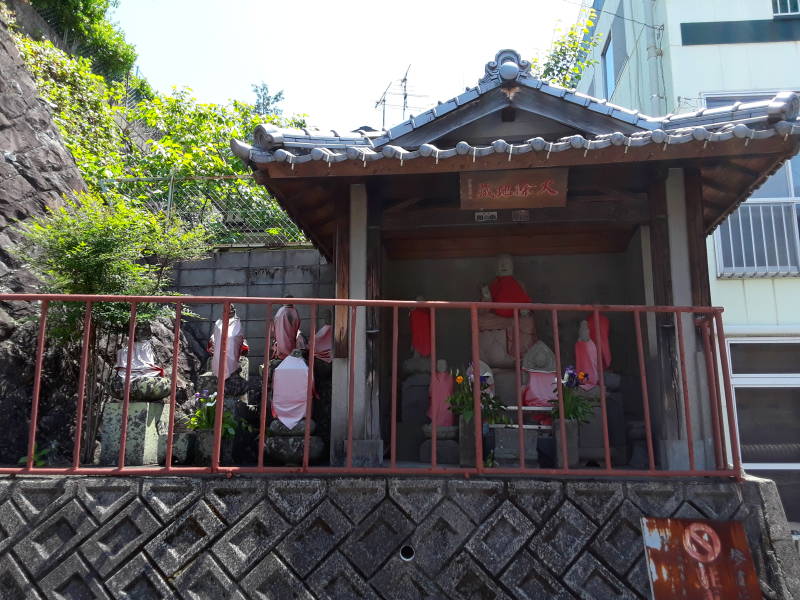
Initially, it's pretty traditional. It's another Ōbaku Zen temple.
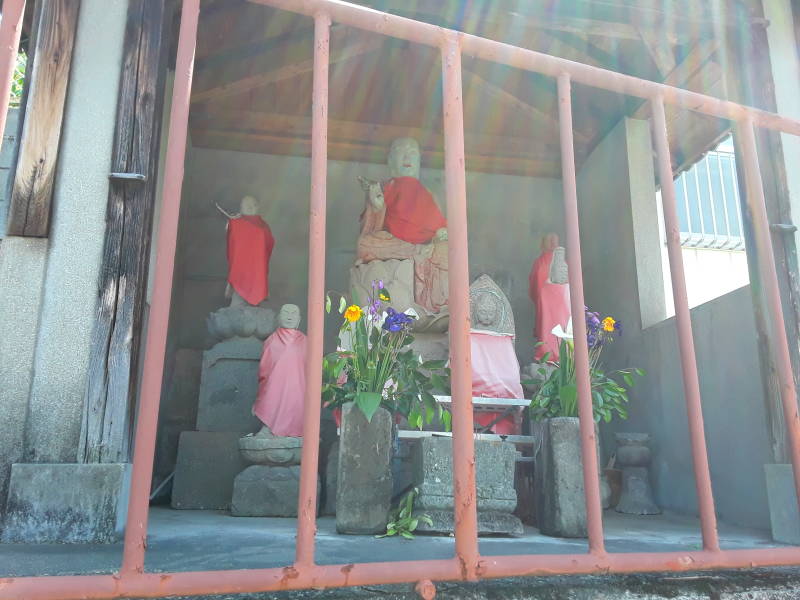
Then, wow.
It's a giant flying turtle carrying an 18-meter-tall aluminium alloy statue of Kannon, the Bodhisattva of compassion.
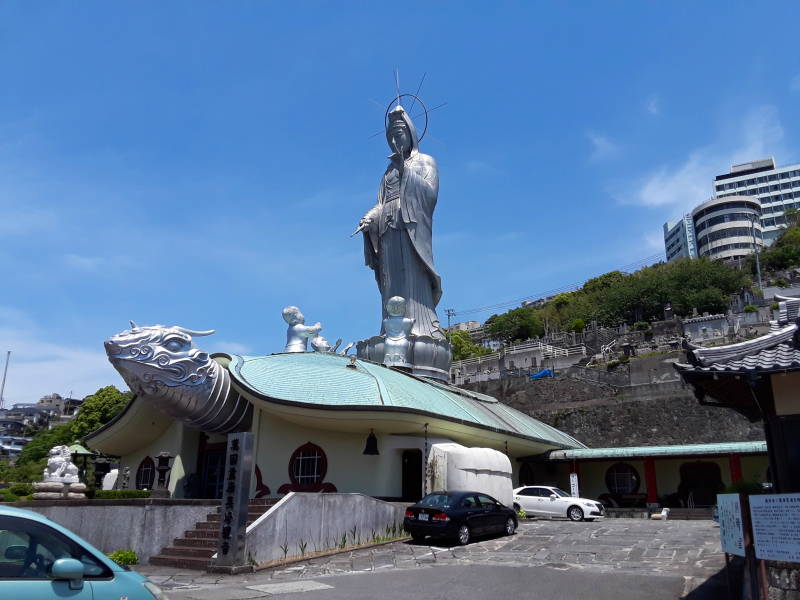
This was the second of the Chinese Zen Buddhist temples founded in Nagasaki. It was established in 1628, by people from Zhangzhou and Quanzhou in Fujian province. It was once the largest of the Chinese temples.
However, it's around the southwest corner of the ridgeline, and so it was exposed to the atomic bomb. All of the original temple complex was destroyed in the fires caused by the bomb.
The replacement was finished in 1979. The main structure is concrete. The turtle's head, the statue of Kannon, and the children are all aluminium.
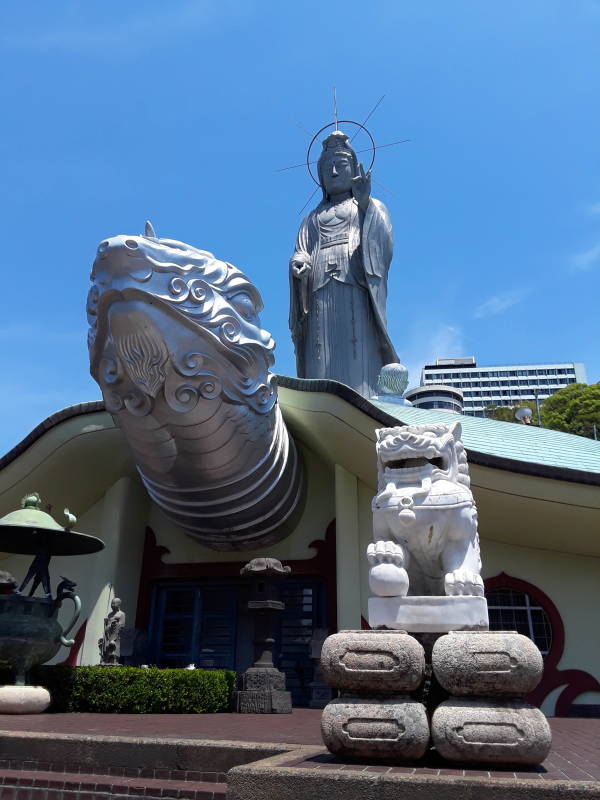
Inside there are aligned holes in the ceiling and floor in front of the altar.
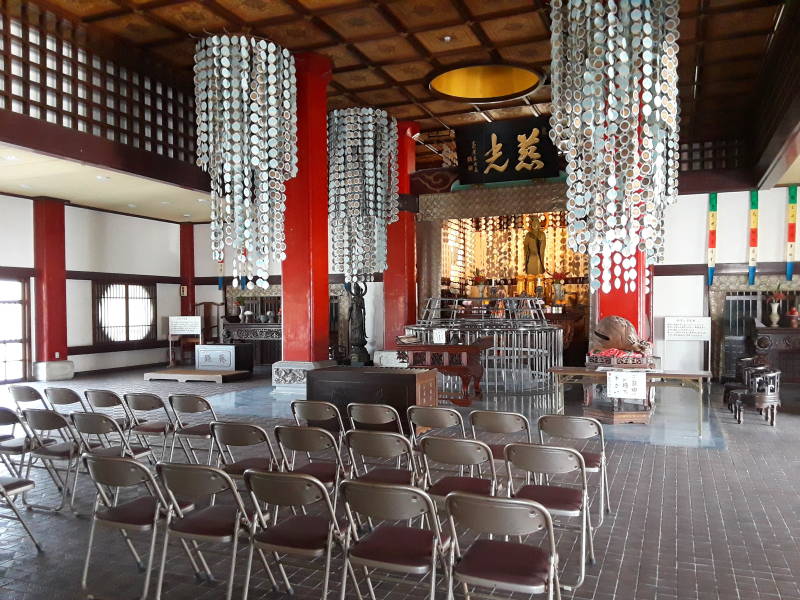
There's a Foucault Pendulum made up of a cable fastened inside the head of the statue of Kannon. It passes down through the statue, the roof, the floor of the sanctuary, and down to the basement.

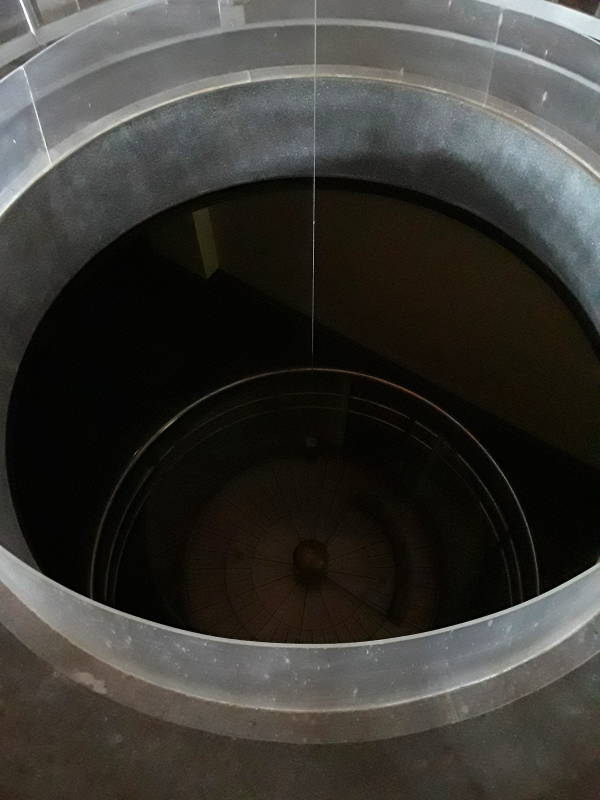
A golden ball at the end of the cable swings over a memorial to war dead. The pendulum arc rotates through 360° every 24 hours, demonstrating the rotation of the Earth.
It's something you would expect to find in a science museum rather than a temple. It used to be the second-largest Foucault Pendulum in the world.
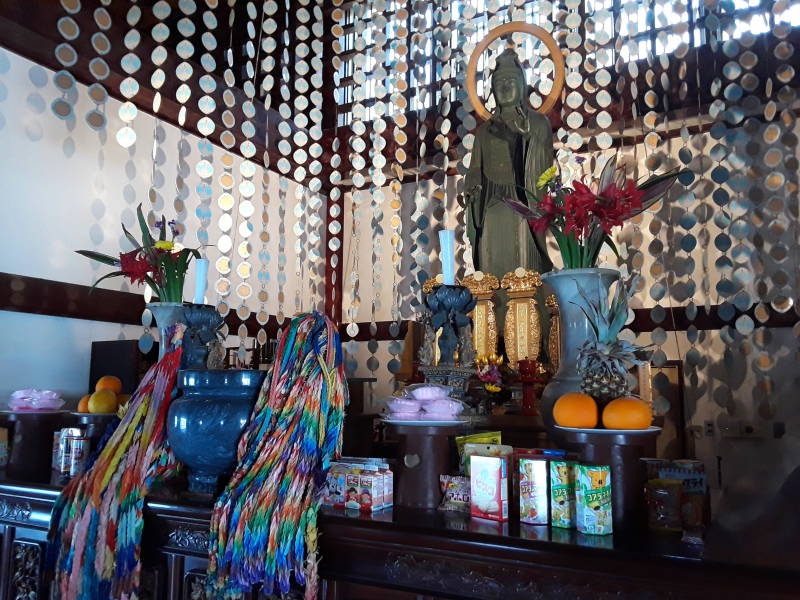
Memorial of the 26 Martyrs
Portuguese traders first arrived in 1543, and Jesuit missionaries soon followed. Most famously, Francis Xavier arrived in Kagoshima, southern Kyūshū, in 1549. He started a program of Christian evangelization throughout Japan, then left for China in 1552.
The shōgunate and the Emperor initially supported the Catholic missionaries, thinking that this could reduce the power of the Buddhist monks and boost trade with Portugal and Spain.
Many Japanese daimyōs or warlords were converting to Christianity. The Portuguese traders, influenced by the missionaries, were more willing to stop at a port controlled by a Christian daimyō — conversion provided better access to European firearms and saltpeter for making gunpowder.
The most prominent converted daimyō was Ōmura Sumitada. He granted a permit in 1571 to a Jesuit missionary and a Portuguese Captain-Major for establishing a Portuguese port in Nagasaki. It quickly grew from a fishing village to a diverse trading city.
In 1575, Pope Gregory XIII issued a papal bull proclaiming that Japan belonged to the Portuguese Diocese of Macau, near Hong Kong along China's coast. Thus the Jesuits had the exclusive right to propagate Christianity within Japan, and the Portuguese had the exclusive right to trade between Japan and the Christian world.
Ōmura and the Jesuit leader Alexandro Valignano turned control of the city over to the Jesuits to prevent it from being controlled by a non-Roman-Catholic daimyō, and for a brief time after 1580, it was a Jesuit colony.
Toyotomi Hideyoshi's campaign to unite all of Japan reached Kyūshū in 1587. He met with the Superior of the Jesuit mission in Nagasaki, and was worried to hear him boast that the Jesuits could summon Portuguese warships and organize Christian daimyōs to support Hideyoshi's invasion of Korea.
Within two weeks, Hideyoshi took control of the city and ordered that all missionaries be expelled. However, that order was mostly unenforced.
Meanwhile, the Spanish and Portuguese crowns had merged in 1580. The union agreement said that Spain would not interfere with Portugal's colonial empire. However, Franciscan missionaries sponsored by Spain were jealous of the success of the Jesuit missionaries sponsored by Portugal.
Spanish Franciscans from the Philippines arrived in Japan in 1593, met with Hideyoshi, and began openly proselytizing near Kyōto, the capital. The Jesuits said that was illegal and reckless, but the Franciscans had been successful in the Americas.
In 1596 the Spanish ship San Felipe wrecked off the coast of Shikoku, the fourth-largest of Japan's islands. The ship was carrying Spanish Franciscan missionaries.
The Spaniards were taken to Kyōto. The ship's pilot casually pulled out a map showing the extent of the Spanish Empire, then told Hideyoshi that Spain routinely sent missionaries as an advance wave for a military invasion, as had happened in the Americas. Send in the missionaries, convert some of the locals, then they support the Conquistadors who come later.
Then two officers explained that Spain and Portugal were two empires but controlled under one king. That contradicted the Jesuit explanation of Portugal and Spain being two totally separate small countries, no colonial ambitions, nothing to worry about.
Hideyoshi was furious, and ordered that all missionaries in Japan were to be rounded up. His commissioners clarified that this applied to the Spanish Franciscans.
It ended up that twenty-six Christians were marched all the way from Kyōto to Nagasaki a few months later, in the winter of 1597, and then crucified on a hill near the harbor. It was meant to be a show of power and control through the country, and a strong discouragement in the center of Japanese Christianity. The twenty-six included six Franciscan friars, including one from the San Felipe, seventeen Japanese tertiaries or lay members of the order, and three Japanese Jesuits who were included by mistake.
A memorial wall, a museum, and a church now stand on the hill. The park area was established in 1955.

This event led to a new wave of persecution of the Japanese Christians, whose numbers may have reached as high as 300,000. 137 churches were demolished, and the Jesuits were ordered to leave Japan. They loaded a Macau-bound freighter with Portuguese merchants dressed in missionary garb, and continued operating discreetly.
More missionaries continued to arrive. The Jesuits, Franciscans, and Augustinian Catholic orders were competing for control of Japan, as were the nations of Spain and Portugal. The rival religious orders argued over which was more to blame for the San Felipe debacle.
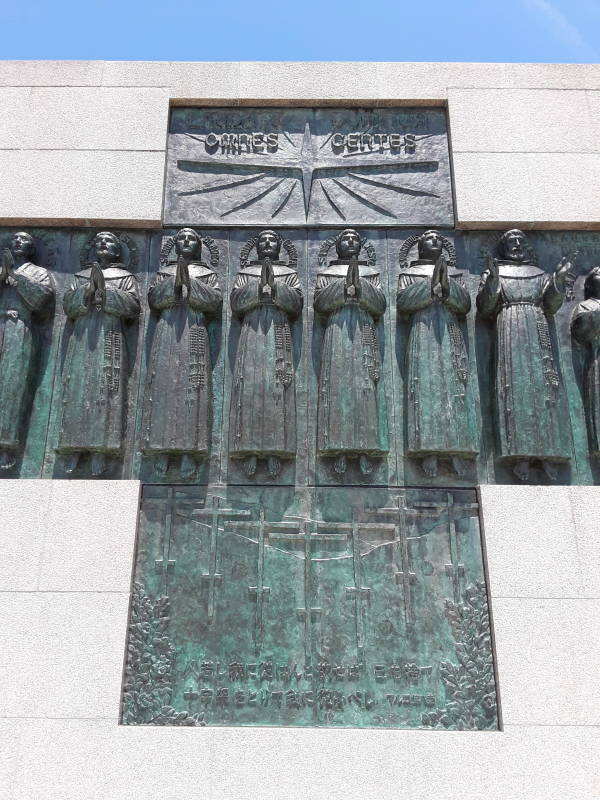
Tokugawa Ieyasu took power in 1603, beginning the Tokugawa Shōgunate that would last over 250 years until the Emperor retook power. Tokugawa initially tolerated Roman Catholicism because many Catholic daimyōs had been his recent allies.
Tokugawa consolidated his power in 1614, officially banned Roman Catholicism, and ordered all missionaries to leave. Most of the Catholic daimyōs renounced the faith and forced their subjects to do so. The minority that would not left Japan for the Portuguese colony in Macau along the coast of China, the Spanish colony of Luzon in the Philippines, and Japantowns across Southeast Asia.
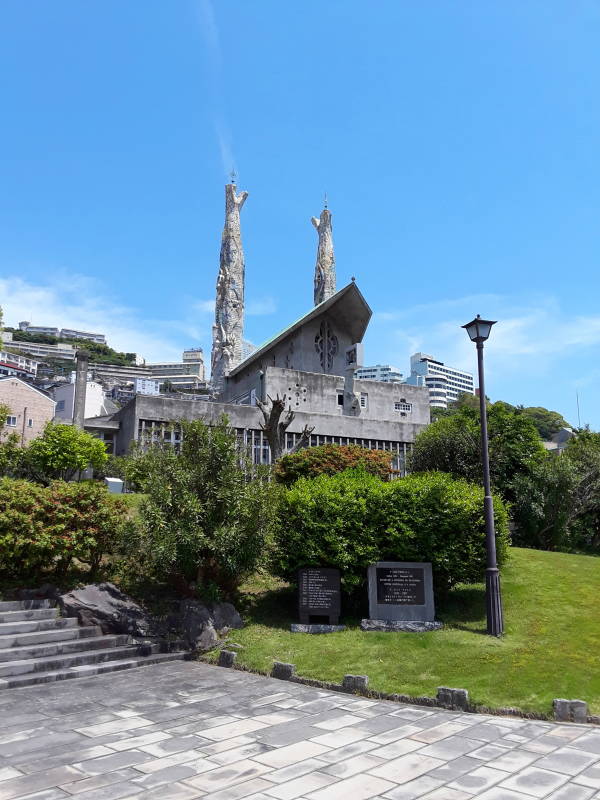

In 1634 the new shōsun Tokugawa Iemitsu had the artificial island of Dejima built in Nagasaki harbor, and moved the remaining Portuguese merchants to it.
By 1639 Tokugawa had become fed up with the Portuguese and banished them from Japan. The Dutch had a trading base on nearby Hirado Island. He moved them to Dejima. Starting in 1641, only Dutch and Chinese ships were allowed to come to Japan, and they could only land in Nagasaki harbor.
Bones of the three Japanese Jesuits were sent to Macao in 1630, then transferred to Manila in 1632. In 1962 they were returned to Nagasaki.

Kotai-ji
Kotai-ji is near the Nakashima River at the base of the hill leading up to Kazagashira Park.
Christianity was flourishing in Nagasaki in the early 1600s. In 1608, Kio Ryokaku founded Kotai-ji in the hopes of strengthening the presence of Buddhism in Nagasaki.

In the mid 1600s the monks' quarters, the abbot's home, and the Zen Hall were constructed. Kotai-ji is of the Sōtō sect, Japan's largest sect of Zen Buddhism.
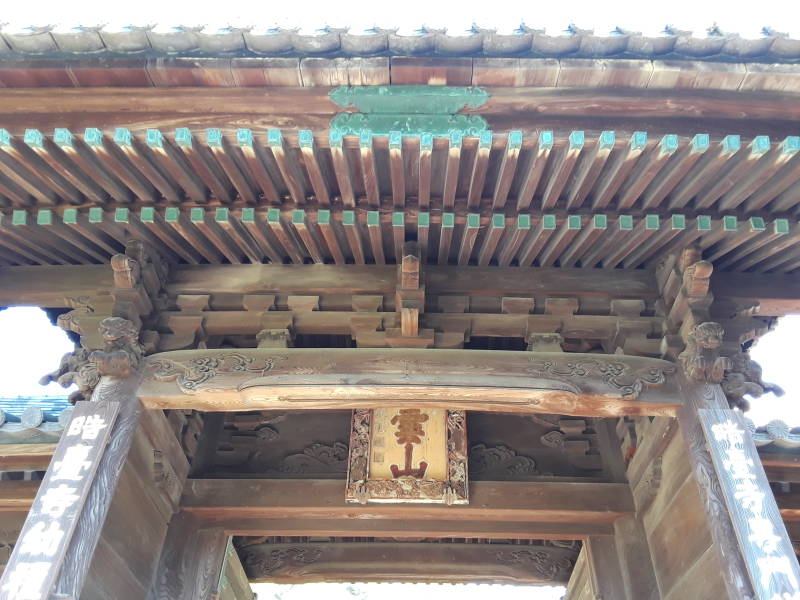
This small mausoleum is topped with a sōrin, as you find on pagodas.
The kurin or the Nine Rings surround the central shaft.
The hōju or hōshu, the Wish-Fulfilling Jewel, is at the very top of the shaft.
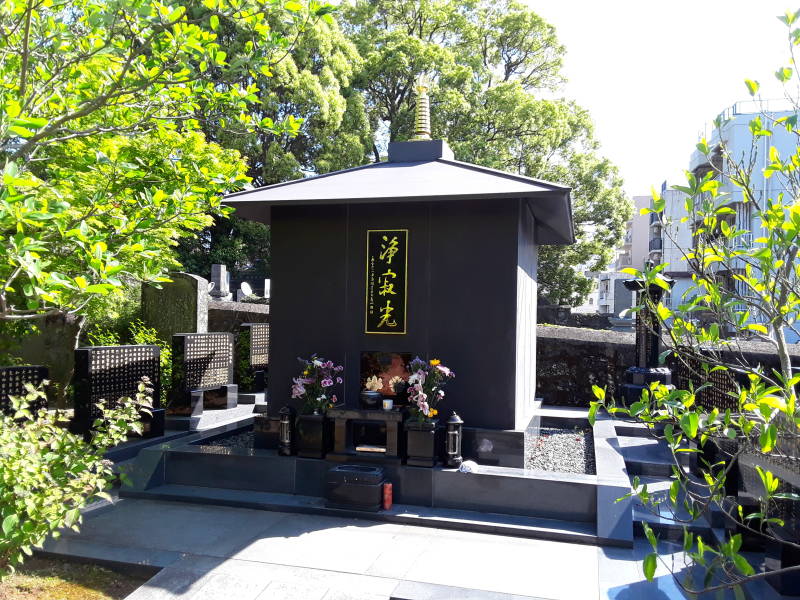
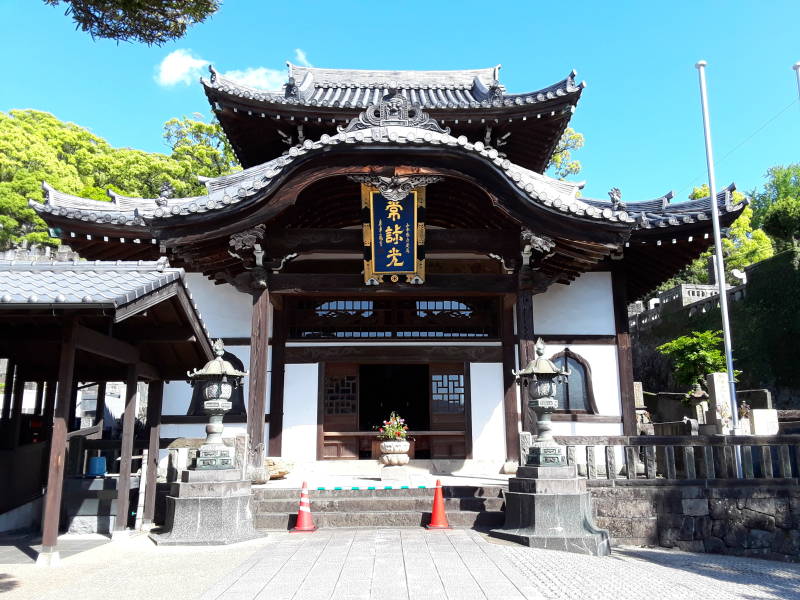
The Nio-mon gate leading to the main hall has two statues of guardian deities in alcoves on either side.
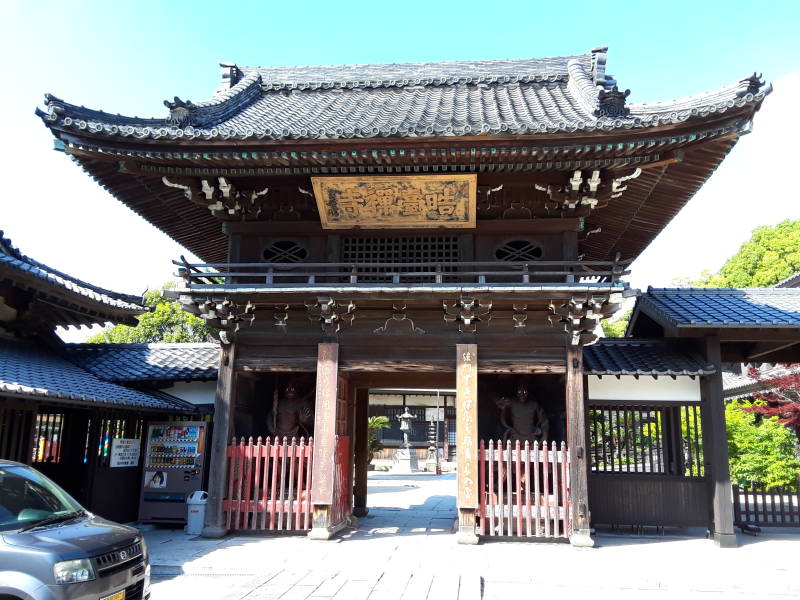
These guardian figures are Niō or Shukongō-shin. They are Hindu deities who have been incorporated into Buddhism as protectors against evil spirits. Their fierce appearance keeps demons and thieves out of the temple grounds.
Typically Agyō stands to the left as you enter, wielding a vajra or thunderbolt. Ungyō is on the right, empty-handed or wielding a sword.
You usually find that the protector on the left has an open mouth, pronouncing the sound of the Sanskrit letter अ or A, while the protector on the right has a closed mouth, pronouncing the sound of the Sanskrit latter म or MA.
Together they pronounce the sacred syllable Aum or ॐ. Aum is the sacred sound of Hinduism, but it is used as a mantra in Buddhist, Jain, and Sikh practice.
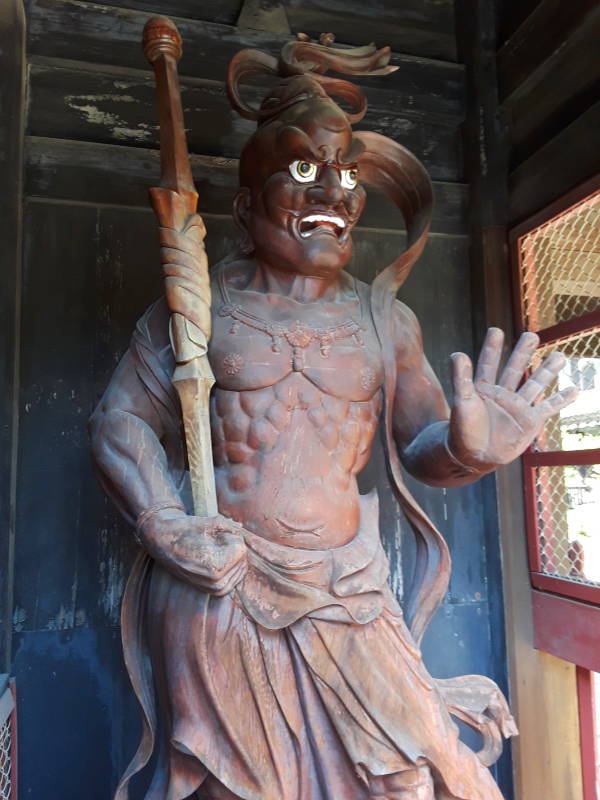

Their appearance is derived from the Greek hero Ηρακλής, or Herakles. Greco-Buddhist art used traditional imagery of Herakles to represent Vajrapāṇi, the protector of the Buddha. Alexander the Great and his army took Greek culture to the edge of the Indian subcontinent. From there it dispersed even further, through Central Asia and then China along the Silk Road, and then on to Japan along with Buddhism.
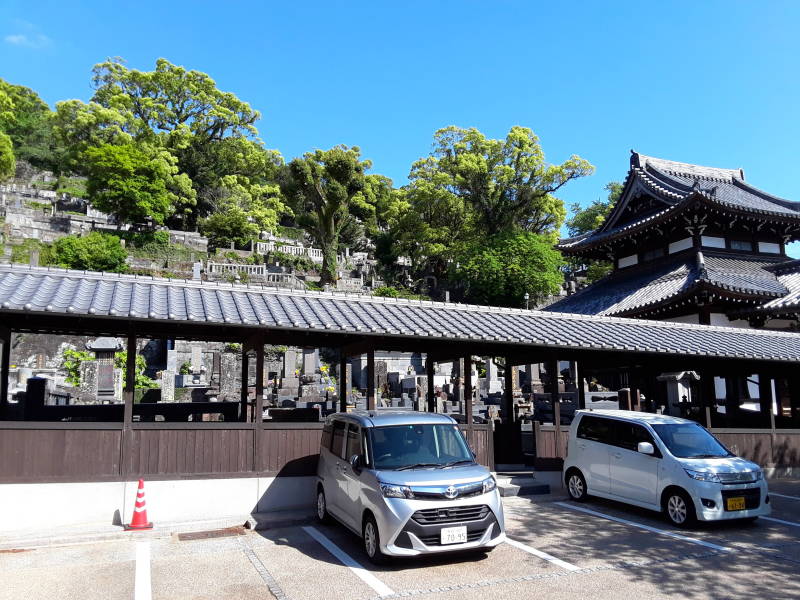
As usual, there is a cemetery associated with the temple. Today there are many Shintō weddings, but the majority of funerals are Buddhist.
The above is specific to Nagasaki. Or maybe you want to explore other places in Japan.
